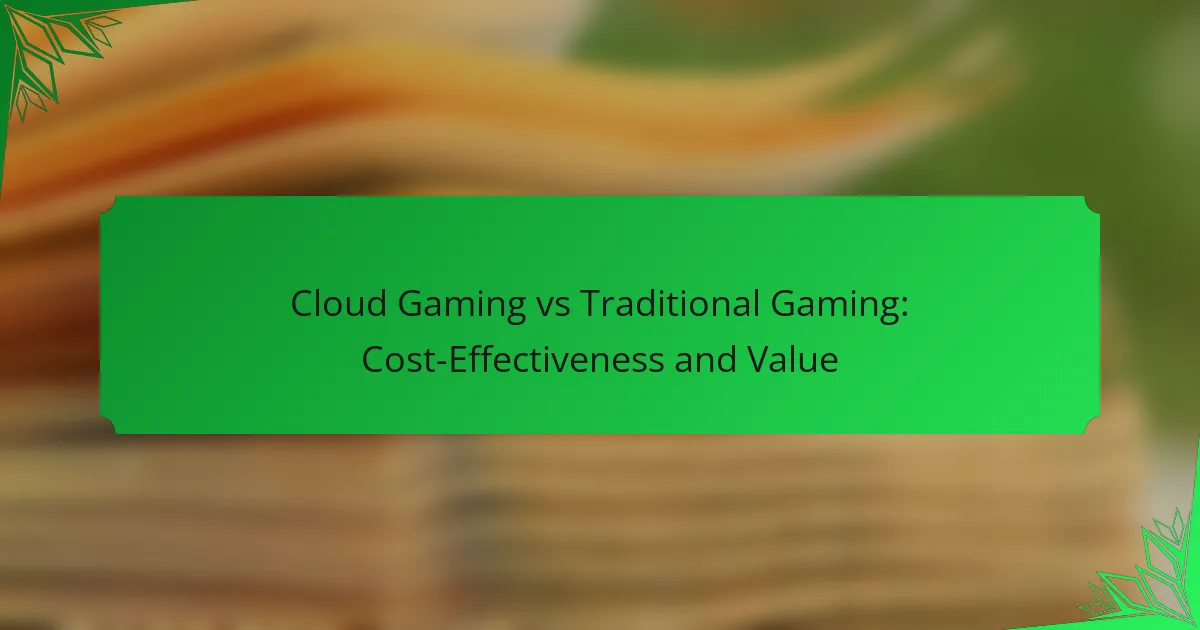User reviews play a crucial role in shaping customer satisfaction by offering valuable insights into product … User Reviews: Satisfaction, Performance and ValueRead more
Cloud streaming and gaming technology are revolutionizing the way players access and enjoy video games. By leveraging advanced platforms and protocols, these innovations enable seamless gameplay over the internet, eliminating the need for high-end hardware. As a result, gamers can experience high-quality performance and flexibility, making gaming more accessible than ever before.
GDPR Compliance: Requirements, Implications and Enforcement
The General Data Protection Regulation (GDPR) establishes essential requirements for organizations to protect personal data and … GDPR Compliance: Requirements, Implications and EnforcementRead more
Network Stability: Effects on Cloud Gaming Experience
Network stability plays a vital role in delivering a smooth cloud gaming experience, particularly in the … Network Stability: Effects on Cloud Gaming ExperienceRead more
Cloud Gaming vs Traditional Gaming: Cost-Effectiveness and Value
As the gaming landscape evolves, the debate between cloud gaming and traditional gaming intensifies, particularly regarding … Cloud Gaming vs Traditional Gaming: Cost-Effectiveness and ValueRead more
Cloud Gaming Technologies: Innovations, Features and Future Outlook
Cloud gaming technologies are rapidly evolving, driven by innovations such as real-time rendering and AI-driven game … Cloud Gaming Technologies: Innovations, Features and Future OutlookRead more
Bandwidth Requirements: 4K Cloud Gaming Essentials
To enjoy 4K cloud gaming, a stable internet connection with a minimum bandwidth of 25 Mbps … Bandwidth Requirements: 4K Cloud Gaming EssentialsRead more
Accessibility Features: Compliance, Usability and User Engagement
Accessibility features are essential for creating digital products that cater to all users, including those with … Accessibility Features: Compliance, Usability and User EngagementRead more
Game Library Compatibility: Platforms, Titles and Access
Game libraries are supported across various platforms, each offering unique titles and access methods. Understanding the … Game Library Compatibility: Platforms, Titles and AccessRead more
Parental Controls: Features, Customization and Safety Measures
Parental controls are essential tools designed to help parents oversee their children’s online activities and create … Parental Controls: Features, Customization and Safety MeasuresRead more
Data Privacy Policies: Key Elements, User Rights and Compliance
Data privacy policies are crucial for organizations as they define the protocols for collecting, using, and … Data Privacy Policies: Key Elements, User Rights and ComplianceRead more
What Are the Key Technologies in Cloud Streaming and Gaming?
Key technologies in cloud streaming and gaming include platforms that deliver games over the internet, protocols that ensure smooth data transfer, and advancements like edge computing that reduce latency. These technologies collectively enhance the gaming experience by providing accessibility and high-quality performance.
Cloud Gaming Platforms
Cloud gaming platforms allow users to play video games streamed directly from remote servers without the need for high-end hardware. Services like NVIDIA GeForce NOW, Google Stadia, and Xbox Cloud Gaming enable gamers to access a library of titles on various devices, including smartphones and smart TVs.
When choosing a platform, consider factors like subscription costs, game availability, and device compatibility. Many platforms offer free trials, allowing users to test performance before committing financially.
Streaming Protocols
Streaming protocols are essential for delivering game data efficiently and with minimal delay. Protocols such as WebRTC and RTP are designed to optimize real-time communication, ensuring that input commands and video streams are synchronized.
For the best experience, look for platforms that utilize low-latency protocols, as they can significantly enhance responsiveness during gameplay. Understanding these protocols can help users troubleshoot issues related to lag or buffering.
Edge Computing
Edge computing brings computing resources closer to the user, reducing latency and improving the speed of data transfer. By processing data at local nodes rather than relying solely on distant data centers, edge computing enhances the performance of cloud gaming.
Implementing edge computing can lead to faster load times and smoother gameplay, especially in regions with limited internet infrastructure. Gamers should consider platforms that leverage edge computing for optimal performance.
Virtual Reality Integration
Virtual reality (VR) integration in cloud gaming allows players to immerse themselves in interactive environments. Platforms that support VR can deliver experiences that are more engaging and realistic, requiring high bandwidth and low latency for optimal performance.
When exploring VR options, ensure that your internet connection meets the necessary speed requirements, typically around 25 Mbps or higher. Additionally, check for compatibility with VR headsets to maximize the experience.
5G Connectivity
5G connectivity significantly enhances cloud gaming by providing faster speeds and lower latency compared to previous mobile networks. This technology enables seamless gaming experiences on mobile devices, allowing users to play high-quality games anywhere with a 5G signal.
As 5G networks expand, gamers should consider upgrading their devices to take full advantage of this technology. Look for mobile plans that include 5G access to ensure the best possible gaming experience on the go.
How Does Cloud Streaming Enhance Gaming Experiences?
Cloud streaming enhances gaming experiences by allowing players to access games without the need for high-end hardware. This technology enables seamless gameplay over the internet, reducing barriers to entry and providing a more flexible gaming environment.
Reduced Latency
Reduced latency is crucial for an optimal gaming experience, as it minimizes the delay between a player's action and the game's response. With advancements in cloud technology, many services now offer latency levels in the low tens of milliseconds, making real-time interaction more feasible.
To achieve low latency, players should choose cloud gaming services with data centers located near their geographic region. This proximity can significantly decrease lag and improve responsiveness during gameplay.
Access to High-Quality Graphics
Cloud streaming provides access to high-quality graphics without the need for expensive gaming consoles or PCs. By leveraging powerful remote servers, players can enjoy visually stunning games at resolutions up to 4K, depending on their internet connection speed.
To optimize graphic quality, ensure a stable internet connection with a minimum speed of around 15 Mbps for standard gaming and at least 25 Mbps for high-definition streaming. This allows for a smooth gaming experience with minimal buffering.
Cross-Platform Play
Cross-platform play is a significant advantage of cloud gaming, enabling players on different devices to compete against each other. This feature fosters a larger gaming community and allows friends to play together regardless of their chosen platform.
When selecting a cloud gaming service, verify that it supports cross-platform capabilities for your favorite games. This ensures you can connect with friends and enjoy a more inclusive gaming experience.
What Are the Leading Cloud Gaming Services?
The leading cloud gaming services provide gamers with the ability to play high-quality video games on various devices without the need for powerful hardware. These platforms stream games directly from the cloud, allowing for flexibility and convenience in gaming experiences.
NVIDIA GeForce NOW
NVIDIA GeForce NOW allows users to play their existing library of games from platforms like Steam and Epic Games Store via cloud streaming. It supports a wide range of devices, including PCs, Macs, and mobile devices, making it accessible for many gamers.
One key consideration is the subscription model, which offers a free tier with limited session lengths and a paid tier that provides longer play sessions and priority access. Users should ensure they have a stable internet connection, ideally with speeds of at least 15 Mbps, for optimal performance.
Google Stadia
Google Stadia enables gamers to play AAA titles without needing a console or high-end PC. Users can purchase games individually and stream them directly to compatible devices, including TVs, laptops, and smartphones.
Stadia's unique selling point is its integration with Google services, allowing for seamless gameplay across devices. However, it requires a strong internet connection, ideally around 35 Mbps for 4K streaming. As of 2023, Google has shifted its focus away from game development, which may affect the platform's future offerings.
Xbox Cloud Gaming
Xbox Cloud Gaming, part of the Xbox Game Pass Ultimate subscription, lets players stream a vast library of Xbox games on various devices. This service is particularly appealing for Xbox console owners, as it allows them to play games without needing to download them.
To use Xbox Cloud Gaming effectively, a minimum internet speed of 10 Mbps is recommended. The service also offers cross-platform play, enabling gamers to connect with friends on different devices. Users should be aware of potential latency issues, which can impact competitive gameplay.
What Are the Challenges of Cloud Streaming and Gaming?
Cloud streaming and gaming face several significant challenges that can impact user experience and service quality. Key issues include bandwidth limitations, data privacy concerns, and service reliability, each of which can affect how effectively these technologies operate.
Bandwidth Limitations
Bandwidth limitations are a primary challenge for cloud streaming and gaming, as they directly affect the quality and speed of data transmission. Users typically require a stable internet connection with a minimum speed of around 25 Mbps for optimal performance, especially for high-definition content.
In areas with slower internet speeds, users may experience lag, buffering, or reduced video quality. To mitigate these issues, consider upgrading your internet plan or using wired connections instead of Wi-Fi, which can be less stable.
Data Privacy Concerns
Data privacy concerns arise as cloud gaming services often collect and store personal information, including gaming habits and payment details. Users must be aware of how their data is used and shared, as well as the security measures in place to protect it.
To safeguard personal information, choose services that are transparent about their data policies and offer strong encryption. Regularly review privacy settings and consider using virtual private networks (VPNs) for an added layer of security.
Service Reliability
Service reliability is crucial for a seamless gaming experience, as interruptions can lead to frustration and loss of progress. Cloud gaming services rely on data centers and server performance, which can be affected by outages or maintenance issues.
To enhance reliability, select providers with a strong track record of uptime and customer support. Additionally, check for service-level agreements (SLAs) that guarantee certain performance standards, helping ensure a consistent gaming experience.
How to Choose the Right Cloud Gaming Service?
Choosing the right cloud gaming service involves evaluating several key factors that affect performance, game library, and pricing. Consider your internet speed, the types of games you want to play, and the subscription costs associated with each service.
Criteria for Selection
When selecting a cloud gaming service, start by assessing your internet connection. A stable and fast connection, ideally with speeds above 15 Mbps, is crucial for a smooth gaming experience. Look for services that offer adaptive streaming quality based on your bandwidth.
Next, examine the game library. Different platforms provide varying access to titles, so ensure the service includes the games you want to play. Some services may offer exclusive titles or early access, which can be a deciding factor.
Finally, consider the pricing model. Subscription costs can range from around $10 to $30 per month, depending on the service and features offered. Be aware of any additional fees for specific games or premium content, and look for trial periods to test the service before committing.









